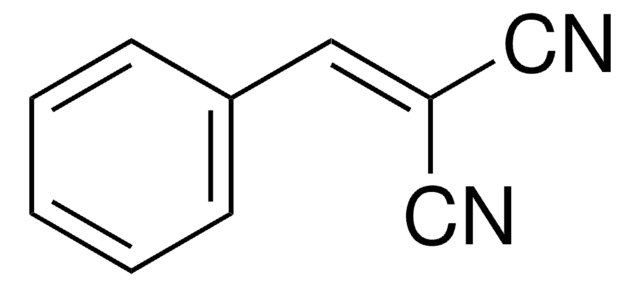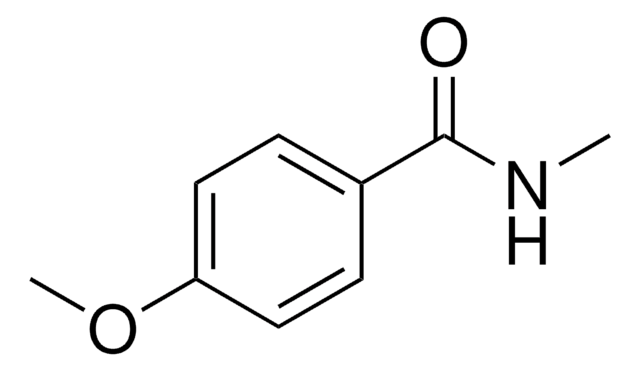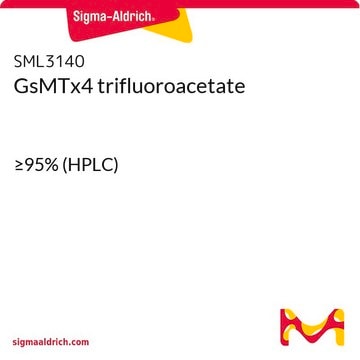T7040
Tyrphostin 1
≥98%
Synonym(s):
(4-Methoxybenzylidene)malononitrile
About This Item
Recommended Products
Assay
≥98%
form
solid
potency
>1250 μM IC50 (negative control)
mp
113-116 °C (lit.)
solubility
chloroform: soluble 50 mg/mL, clear, light yellow
DMSO: soluble
storage temp.
2-8°C
SMILES string
COc1ccc(cc1)\C=C(/C#N)C#N
InChI
1S/C11H8N2O/c1-14-11-4-2-9(3-5-11)6-10(7-12)8-13/h2-6H,1H3
InChI key
UOHFCPXBKJPCAD-UHFFFAOYSA-N
Gene Information
human ... EGFR(1956)
Looking for similar products? Visit Product Comparison Guide
Application
Biochem/physiol Actions
Features and Benefits
Preparation Note
Storage Class Code
11 - Combustible Solids
WGK
WGK 3
Flash Point(F)
Not applicable
Flash Point(C)
Not applicable
Personal Protective Equipment
Certificates of Analysis (COA)
Search for Certificates of Analysis (COA) by entering the products Lot/Batch Number. Lot and Batch Numbers can be found on a product’s label following the words ‘Lot’ or ‘Batch’.
Already Own This Product?
Find documentation for the products that you have recently purchased in the Document Library.
Articles
Discover Bioactive Small Molecules for Kinase Phosphatase Biology
Our team of scientists has experience in all areas of research including Life Science, Material Science, Chemical Synthesis, Chromatography, Analytical and many others.
Contact Technical Service








